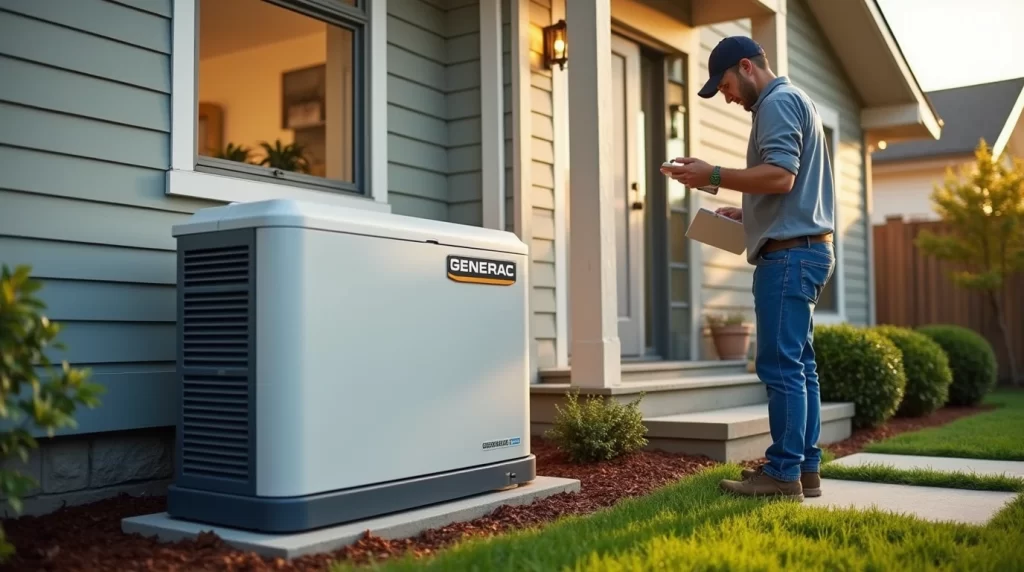When power outages strike, having a generator can keep your home running smoothly. But one common question homeowners ask is: What size generator is needed to power a house? Selecting the right generator size is crucial to ensure your essential appliances function during an outage without overloading the generator. In this guide, we’ll walk you through the steps to determine the appropriate generator size for your home.
Understanding Generator Sizes
Generators are rated by the amount of power they produce, measured in watts (W) or kilowatts (kW). The size you need depends on the total wattage of all the appliances and systems you want to power simultaneously.
- Portable Generators: Typically range from 1,000W to 10,000W.
- Standby Generators: Range from 7,000W (7kW) to 26,000W (26kW) or more.
Steps to Determine the Right Generator Size
1. List Essential Appliances and Systems
Start by listing all the appliances and systems you need during a power outage. Consider essentials like:
- Refrigerator and freezer
- Heating or air conditioning system
- Lights
- Well pump (if applicable)
- Sump pump
- Medical equipment
- Cooking appliances
- Electronics (TV, computer, phone chargers)
2. Calculate the Total Wattage
For each appliance, note the starting (surge) wattage and running wattage:
- Running Wattage: The continuous power needed to keep the appliance running.
- Starting Wattage: Additional power required to start the appliance (usually for devices with motors).
You can find this information on the appliance’s nameplate or in the owner’s manual. Alternatively, use this general Wattage Estimation Guide.
Example:
| Appliance | Running Watts | Starting Watts |
|---|---|---|
| Refrigerator | 700 W | 2,200 W |
| Sump Pump | 1,000 W | 2,000 W |
| Furnace Fan | 800 W | 1,350 W |
| Lights | 400 W | 0 W |
| Television | 200 W | 0 W |
| Total | 3,100 W | 5,550 W |
3. Add Up the Wattages
- Total Running Watts: Sum of all running watts.
- Highest Starting Watts: Highest starting wattage among appliances (since not all devices start simultaneously).
Total Generator Capacity Needed: Total Running Watts + Highest Starting Watts
In our example:
- Total Running Watts: 3,100 W
- Highest Starting Watts: 2,200 W (Refrigerator)
- Total Capacity Needed: 3,100 W + 2,200 W = 5,300 W
4. Choose a Generator with a Slightly Higher Capacity
Select a generator that exceeds your total capacity needs by 10-20% to prevent overloading and allow for additional devices.
- Recommended Generator Size: At least 6,000 W (6 kW)
Generator Size Recommendations
5,000 – 10,000 Watts
- Powers basic essentials: refrigerator, sump pump, lights, and some electronics.
10,000 – 16,000 Watts
- Can handle larger appliances like electric water heaters, well pumps, and multiple rooms.
16,000 – 26,000 Watts
- Suitable for larger homes needing to power most appliances, including central air conditioning and heating systems.
26,000 Watts and Above
- Can run a whole house, including all major appliances and systems simultaneously.
Factors to Consider
1. Fuel Type
Generators run on various fuels:
- Gasoline: Common for portable generators but has limited shelf life.
- Propane: Cleaner burning and longer shelf life.
- Natural Gas: Convenient for standby generators connected to home gas lines.
- Diesel: Efficient and long-lasting but may be less common for residential use.
2. Transfer Switch
A transfer switch connects the generator to your home’s electrical panel, allowing for safe operation. It’s essential for standby generators and recommended for portable ones.
👉 Learn more about safe generator operation in our article on Generator Maintenance for Winter.
3. Future Needs
Consider any future additions to your home or changes in power needs. Opting for a slightly larger generator can accommodate these changes.
Professional Assessment
Calculating the exact generator size can be complex. A licensed electrician can perform a thorough assessment of your home’s electrical needs.
Benefits of Professional Assessment:
- Accurate Load Calculation: Ensures all essential systems are accounted for.
- Safety Compliance: Proper installation meets local codes and safety standards.
- Customized Solutions: Recommendations tailored to your specific needs.
👉 Contact Kendrick Electric for a professional generator sizing and installation consultation.
Additional Tips
- Regular Maintenance: Keep your generator in top condition to ensure reliability during outages. Refer to our guide on Generator Maintenance for Winter.
- Prepare Your Home: Implement energy-efficient practices to reduce overall power needs. See our article on Electrical Upgrades for Winter.
- Safety First: Always operate generators outdoors in a well-ventilated area to prevent carbon monoxide poisoning.
Conclusion
Determining what size generator is needed to power a house involves calculating your total power requirements and considering factors like fuel type and future needs. Whether you need to power essential appliances or your entire home, selecting the right generator ensures comfort and safety during power outages.
For expert guidance and installation services, trust the professionals at Kendrick Electric. We’re here to help you make an informed decision and provide reliable backup power solutions.



